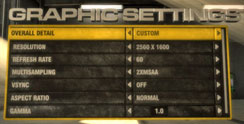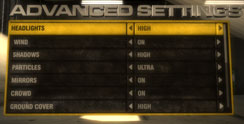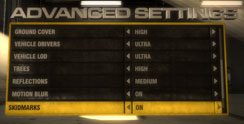Race Driver: GRID
Publisher: CodemastersRace Driver: GRID is one of the best racing games to grace the PC in some time, striking a fine balance between automotive simulation and arcade throttle-fest which has resulted in an enormously entertaining game. Players can choose from racing tuned saloons through city streets, through to driving Lamborghinis around Le Mans, with all cars displaying a highly detailed damage model.
GRID runs on a modified version of Codemasters' own in house Neon engine, rechristened Ego for GRID. This will also be the engine used in the highly anticipated Operation Flashpoint 2: Dragon Rising, so hopefully GRID will give us a good indication of how hardware will perform in this future title too. Despite only supporting DirectX 9.0c, GRID features a lot of high level graphical features, including motion blur, fantastic smoke effects, dynamic track side details and thousands of fully 3D spectators.
To test performance in GRID, we raced a lap of the "San Francisco Short Circuit" track in the RADT Nissan Skyline Z-tune, starting from the back of the grid to ensure as many cars on screen for as long as possible. We chose the San Francisco circuit due to the large amount of dynamic track side details like flags and spectators visible from the track, and for the close proximity of track side objects.
However, GRID does not support anisotropic filtering in game, so we had to force this to 16x using the Forceware and Catalyst drivers. We captured the average and minimum frame rates during the lap, and the results you see below are indicative of around one minute and forty seconds of gameplay (average lap time) per setting.
There's a promising amount of performance available from the Radeon HD 4770 in GRID, although it doesn't match the Radeon HD 4850 quite as closely as it does in some of the other titles we've tested. With 4xAA applied at 1,920 x 1,200, the Radeon HD 4770 matches the GeForce GTS 250's performance and delivers a higher minimum frame rate too. This is a big difference to 1,680 x 1,050 with 4xAA, where the GTS 250 is quite a bit faster than everything else we've tested here.
What's interesting though is that the wheels fall off the green race car as soon as 8xAA is enabled, while the red card continues on without much of a slowdown. It's pretty amazing to see this class of performance from a card with a 128-bit memory interface - it's all thanks to GDDR5's awesome bandwidth.

MSI MPG Velox 100R Chassis Review
October 14 2021 | 15:04












Want to comment? Please log in.